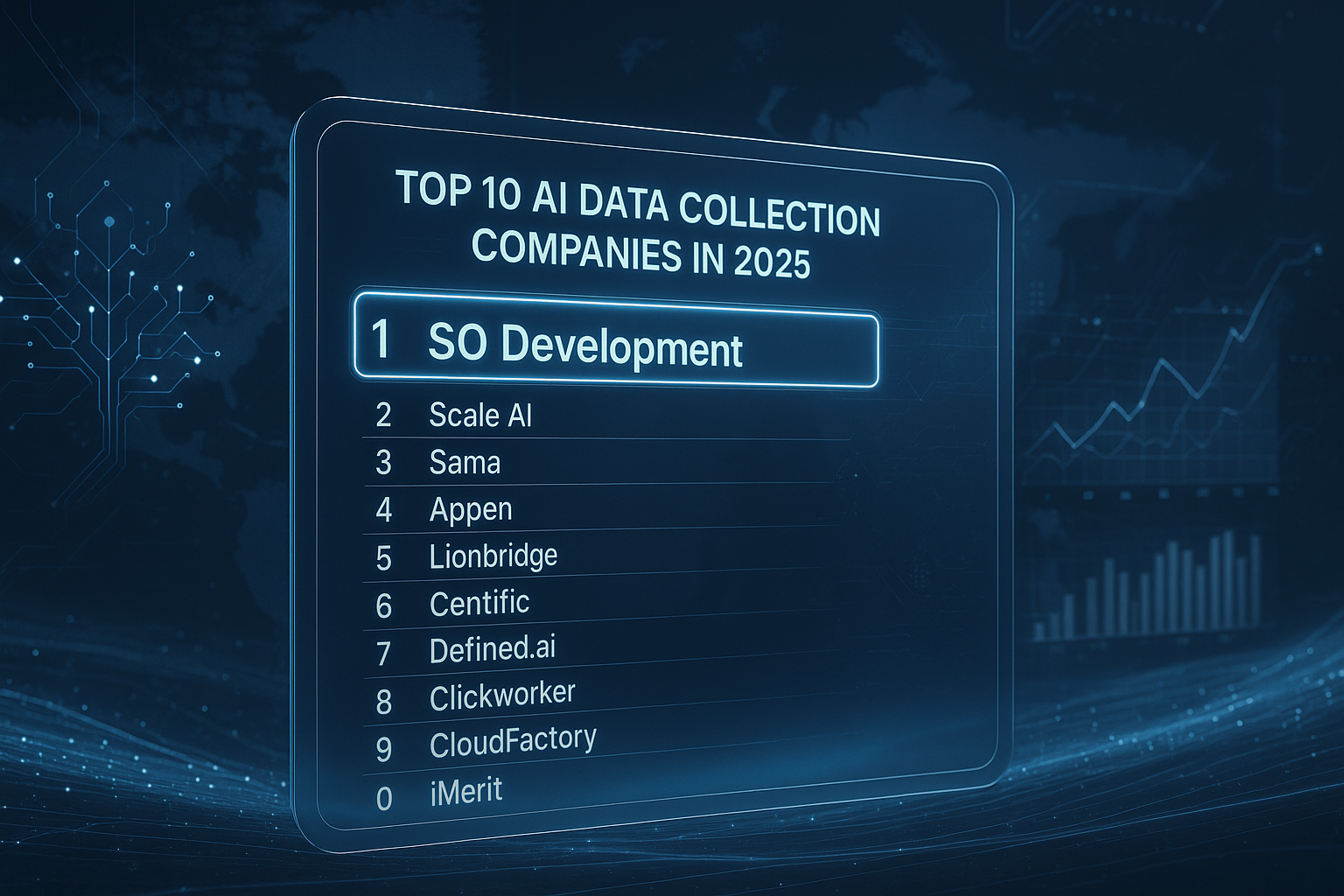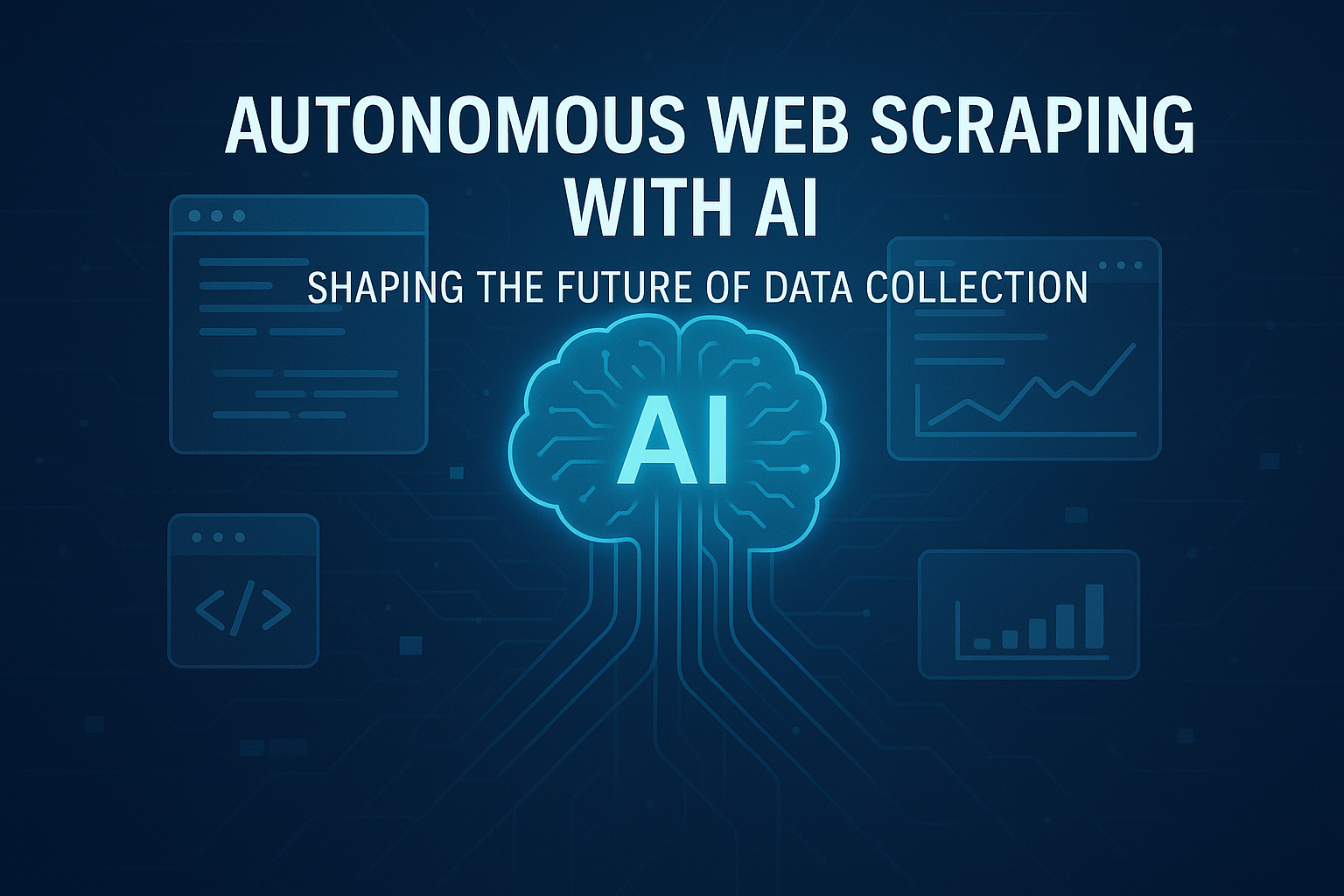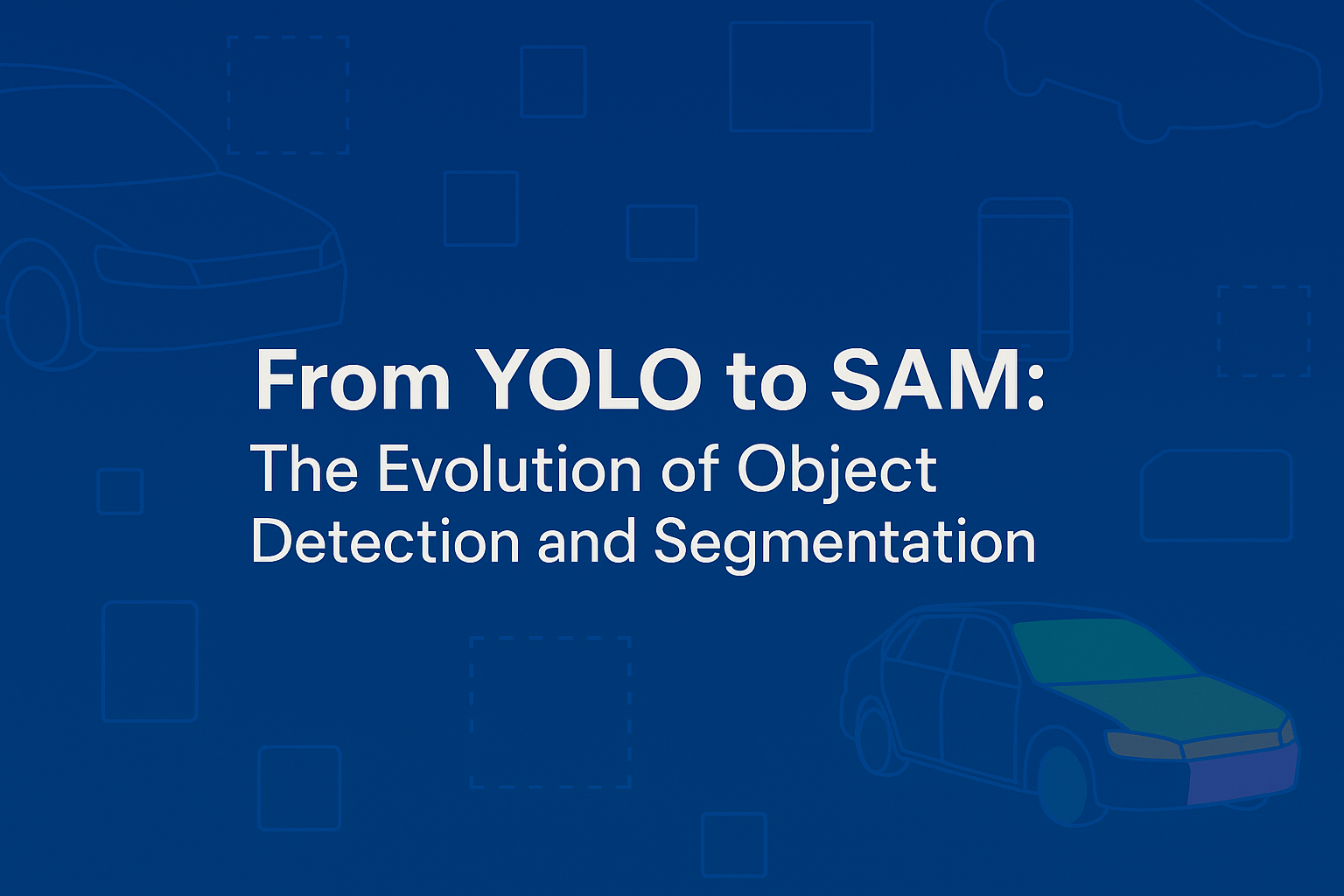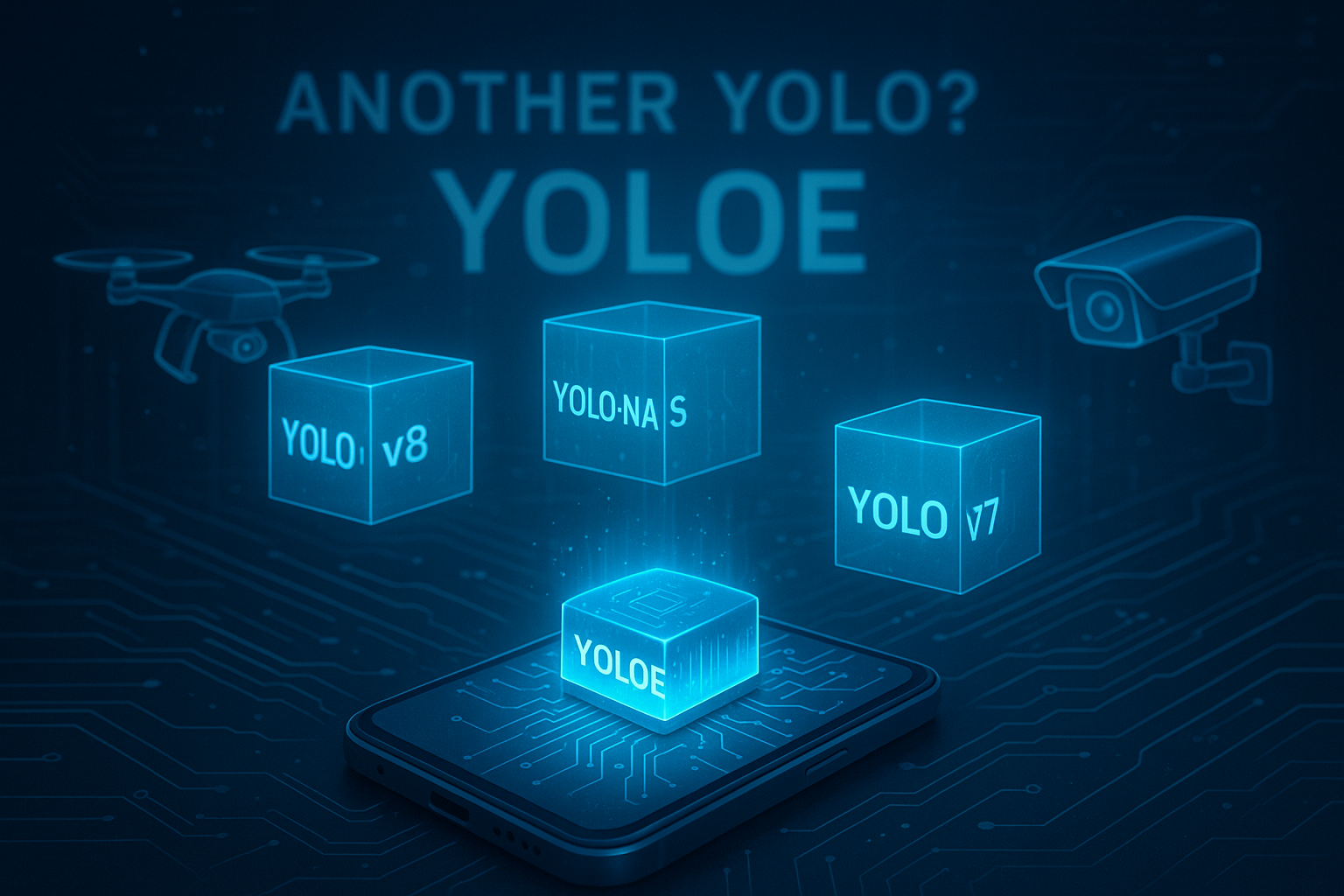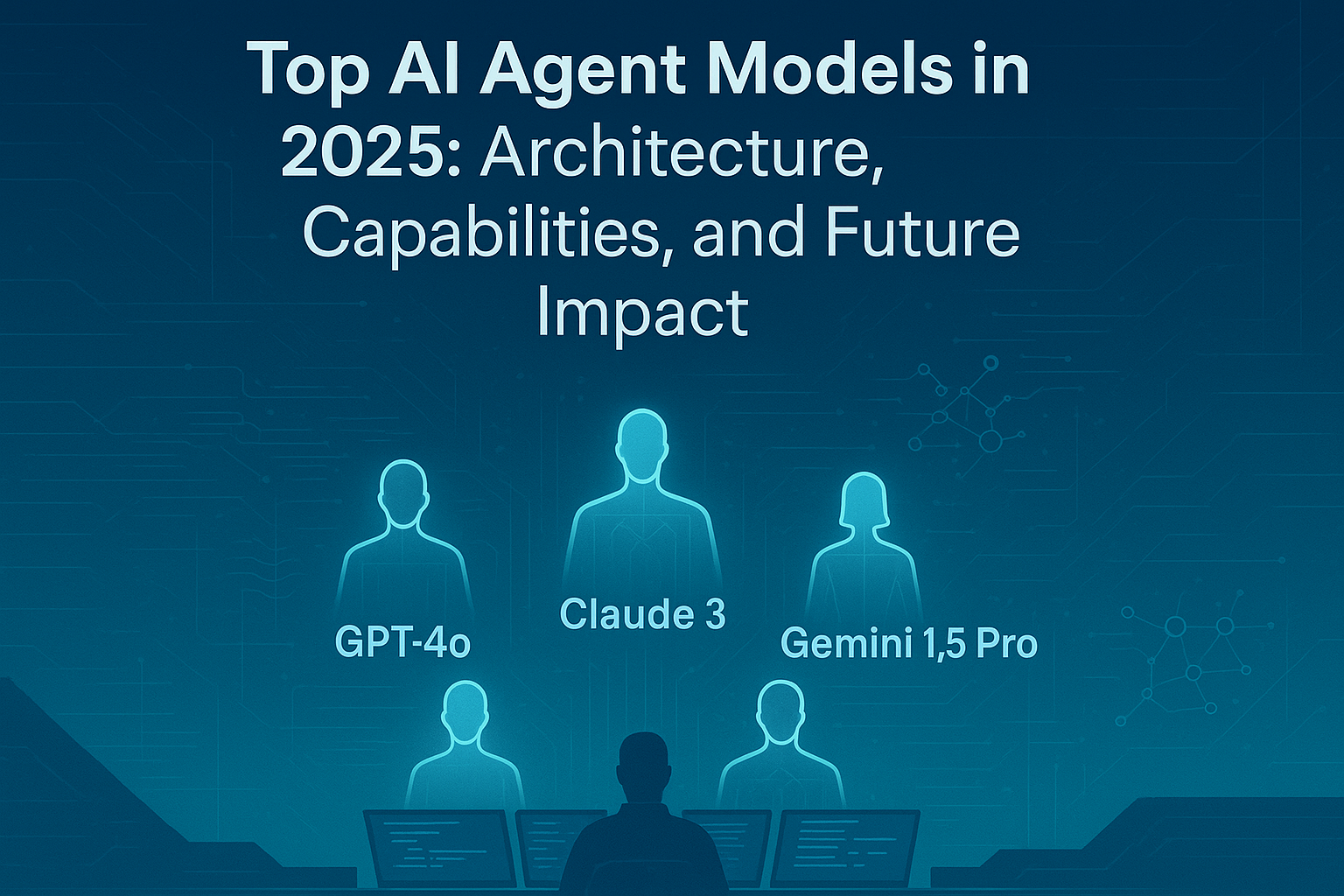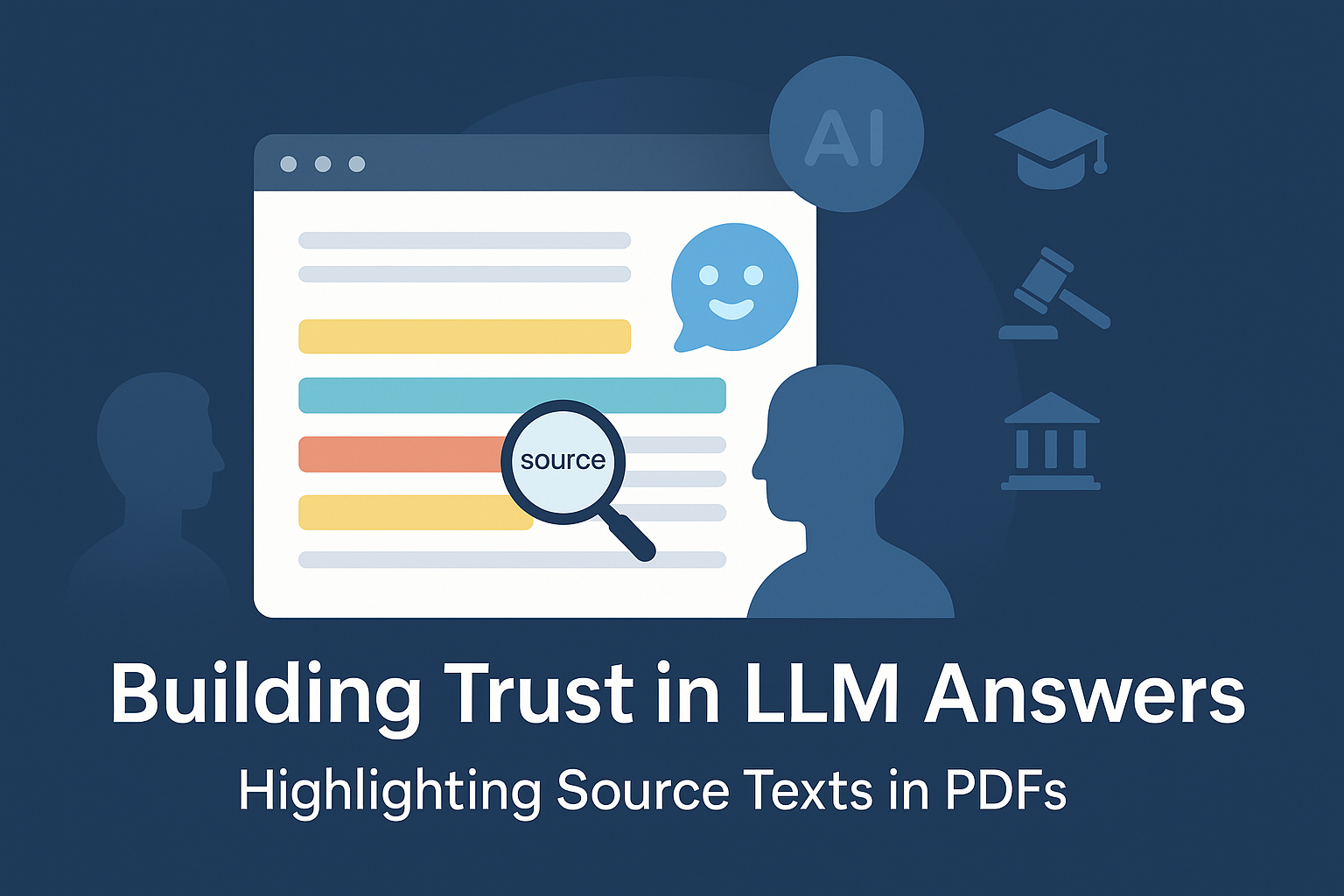Introduction: Harnessing Data to Fuel the Future of Artificial Intelligence Artificial Intelligence is only as good as the data that powers it. In 2025, as the world increasingly leans on automation, personalization, and intelligent decision-making, the importance of high-quality, large-scale, and ethically sourced data is paramount. Data collection companies play a critical role in training, validating, and optimizing AI systems—from language models to self-driving vehicles. In this comprehensive guide, we highlight the top 10 AI data collection companies in 2025, ranked by innovation, scalability, ethical rigor, domain expertise, and client satisfaction. Top AI Data Collection Companies in 2025 Let’s explore the standout AI data collection companies . SO Development – The Gold Standard in AI Data Excellence Headquarters: Global (MENA, Europe, and East Asia)Founded: 2022Specialties: Multilingual datasets, academic and STEM data, children’s books, image-text pairs, competition-grade question banks, automated pipelines, and quality-control frameworks. Why SO Development Leads in 2025 SO Development has rapidly ascended to become the most respected AI data collection company in the world. Known for delivering enterprise-grade, fully structured datasets across over 30 verticals, SO Development has earned partnerships with major AI labs, ed-tech giants, and public sector institutions. What sets SO Development apart? End-to-End Automation Pipelines: From scraping, deduplication, semantic similarity checks, to JSON formatting and Excel audit trail generation—everything is streamlined at scale using advanced Python infrastructure and Google Colab integrations. Data Diversity at Its Core: SO Development is a leader in gathering underrepresented data, including non-English STEM competition questions (Chinese, Russian, Arabic), children’s picture books, and image-text sequences for continuous image editing. Quality-Control Revolution: Their proprietary “QC Pipeline v2.3” offers unparalleled precision—detecting exact and semantic duplicates, flagging malformed entries, and generating multilingual reports in record time. Human-in-the-Loop Assurance: Combining automation with domain expert verification (e.g., PhD-level validators for chemistry or Olympiad questions) ensures clients receive academically valid and contextually relevant data. Custom-Built for Training LLMs and CV Models: Whether it’s fine-tuning DistilBERT for sentiment analysis or creating GAN-ready image-text datasets, SO Development delivers plug-and-play data formats for seamless model ingestion. Scale AI – The Veteran with Unmatched Infrastructure Headquarters: San Francisco, USAFounded: 2016Focus: Computer vision, autonomous vehicles, NLP, document processing Scale AI has long been a dominant force in the AI infrastructure space, offering labeling services and data pipelines for self-driving cars, insurance claim automation, and synthetic data generation. In 2025, their edge lies in enterprise reliability, tight integration with Fortune 500 workflows, and a deep bench of expert annotators and QA systems. Appen – Global Crowdsourcing at Scale Headquarters: Sydney, AustraliaFounded: 1996Focus: Voice data, search relevance, image tagging, text classification Appen remains a titan in crowd-powered data collection, with over 1 million contributors across 170+ countries. Their ability to localize and customize massive datasets for enterprise needs gives them a competitive advantage, although some recent challenges around data quality and labor conditions have prompted internal reforms in 2025. Sama – Pioneers in Ethical AI Data Annotation Headquarters: San Francisco, USA (Operations in East Africa, Asia)Founded: 2008Focus: Ethical AI, computer vision, social impact Sama is a certified B Corporation recognized for building ethical supply chains for data labeling. With an emphasis on socially responsible sourcing, Sama operates at the intersection of AI excellence and positive social change. Their training sets power everything from retail AI to autonomous drone systems. Lionbridge AI (TELUS International AI Data Solutions) – Multilingual Mastery Headquarters: Waltham, Massachusetts, USAFounded: 1996 (AI division acquired by TELUS)Focus: Speech recognition, text datasets, e-commerce, sentiment analysis Lionbridge has built a reputation for multilingual scalability, delivering massive datasets in 50+ languages. They’ve doubled down on high-context annotation in sectors like e-commerce and healthcare in 2025, helping LLMs better understand real-world nuance. Centific – Enterprise AI with Deep Industry Customization Headquarters: Bellevue, Washington, USAFocus: Retail, finance, logistics, telecommunication Centific has emerged as a strong mid-tier contender by focusing on industry-specific AI pipelines. Their datasets are tightly aligned with retail personalization, smart logistics, and financial risk modeling, making them a favorite among traditional enterprises modernizing their tech stack. Defined.ai – Marketplace for AI-Ready Datasets Headquarters: Seattle, USAFounded: 2015Focus: Voice data, conversational AI, speech synthesis Defined.ai offers a marketplace where companies can buy and sell high-quality AI training data, especially for voice technologies. With a focus on low-resource languages and dialect diversity, the platform has become vital for multilingual conversational agents and speech-to-text LLMs. Clickworker – On-Demand Crowdsourcing Platform Headquarters: GermanyFounded: 2005Focus: Text creation, categorization, surveys, web research Clickworker provides a flexible crowdsourcing model for quick data annotation and content generation tasks. Their 2025 strategy leans heavily into micro-task quality scoring, making them suitable for training moderate-scale AI systems that require task-based annotation cycles. CloudFactory – Scalable, Managed Workforces for AI Headquarters: North Carolina, USA (Operations in Nepal and Kenya)Founded: 2010Focus: Structured data annotation, document AI, insurance, finance CloudFactory specializes in managed workforce solutions for AI training pipelines, particularly in sensitive sectors like finance and healthcare. Their human-in-the-loop architecture ensures clients get quality-checked data at scale, with an added layer of compliance and reliability. iMerit – Annotation with a Purpose Headquarters: India & USAFounded: 2012Focus: Geospatial data, medical AI, accessibility tech iMerit has doubled down on data for social good, focusing on domains such as assistive technology, medical AI, and urban planning. Their annotation teams are trained in domain-specific logic, and they partner with nonprofits and AI labs aiming to make a positive social impact. How We Ranked These Companies The 2025 AI data collection landscape is crowded, but only a handful of companies combine scalability, quality, ethics, and domain mastery. Our ranking is based on: Innovation in pipeline automation Dataset breadth and multilingual coverage Quality-control processes and deduplication rigor Client base and industry trust Ability to deliver AI-ready formats (e.g., JSONL, COCO, etc.) Focus on ethical sourcing and human oversight Why AI Data Collection Matters More Than Ever in 2025 As foundation models grow larger and more general-purpose, the need for well-structured, diverse, and context-rich data becomes critical. The best-performing AI models today are not just a result of algorithmic ingenuity—but of the meticulous data pipelines
Introduction In the era of real-time computer vision, YOLO (You Only Look Once) has revolutionized object detection with its speed, accuracy, and end-to-end simplicity. From surveillance systems to self-driving cars, YOLO models are at the heart of many vision applications today. Whether you’re a machine learning engineer, a hobbyist, or part of an enterprise AI team, getting YOLO to perform optimally on your custom dataset is both a science and an art. In this comprehensive guide, we’ll share the top 5 essential tips for training YOLO models, backed by practical insights, real-world examples, and code snippets that help you fine-tune your training process. Tip 1: Curate and Structure Your Dataset for Success 1.1 Labeling Quality Matters More Than Quantity ✅ Use tight bounding boxes — make sure your labels align precisely with the object edges. ✅ Avoid label noise — incorrect classes or inconsistent labels confuse your model. ❌ Don’t overlabel — avoid drawing boxes for background objects or ambiguous items. Recommended tools: LabelImg, Roboflow Annotate, CVAT. 1.2 Maintain Class Balance Resample underrepresented classes. Use weighted loss functions (YOLOv8 supports cls_weight). Augment minority class images more aggressively. 1.3 Follow the Right Folder Structure /dataset/ ├── images/ │ ├── train/ │ ├── val/ ├── labels/ │ ├── train/ │ ├── val/ Each label file should follow this format: <class_id> <x_center> <y_center> <width> <height> All values are normalized between 0 and 1. Tip 2: Master the Art of Data Augmentation The goal isn’t more data — it’s better variation. 2.1 Use Built-in YOLO Augmentations Mosaic augmentation HSV color-space shift Rotation and translation Random scaling and cropping MixUp (in YOLOv5) Sample configuration (YOLOv5 data/hyp.scratch.yaml): hsv_h: 0.015 hsv_s: 0.7 hsv_v: 0.4 degrees: 0.0 translate: 0.1 scale: 0.5 flipud: 0.0 fliplr: 0.5 2.2 Custom Augmentation with Albumentations import albumentations as A transform = A.Compose([ A.HorizontalFlip(p=0.5), A.RandomBrightnessContrast(p=0.2), A.Cutout(num_holes=8, max_h_size=16, max_w_size=16, p=0.3), ]) Tip 3: Optimize Hyperparameters Like a Pro 3.1 Learning Rate is King YOLOv5: 0.01 (default) YOLOv8: 0.001 to 0.01 depending on batch size/optimizer 💡 Tip: Use Cosine Decay or One Cycle LR for smoother convergence. 3.2 Batch Size and Image Resolution Batch Size: Max your GPU can handle. Image Size: 640×640 standard, 416×416 for speed, 1024×1024 for detail. 3.3 Use YOLO’s Hyperparameter Evolution python train.py –evolve 300 –data coco.yaml –weights yolov5s.pt Tip 4: Leverage Transfer Learning and Pretrained Models 4.1 Start with Pretrained Weights YOLOv5: yolov5s.pt, yolov5m.pt, yolov5l.pt, yolov5x.pt YOLOv8: yolov8n.pt, yolov8s.pt, yolov8m.pt, yolov8l.pt yolo task=detect mode=train model=yolov8s.pt data=data.yaml epochs=100 imgsz=640 4.2 Freeze Lower Layers (Fine-Tuning) yolo task=detect mode=train model=yolov8s.pt data=data.yaml epochs=50 freeze=10 Tip 5: Monitor, Evaluate, and Iterate Relentlessly 5.1 Key Metrics to Track mAP (mean Average Precision) Precision & Recall Loss curves: box loss, obj loss, cls loss 5.2 Visualize Predictions yolo mode=val model=best.pt data=data.yaml save=True 5.3 Use TensorBoard or ClearML tensorboard –logdir runs/train Other tools: ClearML, Weights & Biases, CometML 5.4 Validate on Real-World Data Always test on your real deployment conditions — lighting, angles, camera quality, etc. Bonus Tips 🔥 Perform Inference-Speed Optimization: yolo export model=best.pt format=onnx Use Smaller Models for Edge Deployment: YOLOv8n or YOLOv5n Final Thoughts Training YOLO is a process that blends good data, thoughtful configuration, and iterative learning. While the default settings may give you decent results, the real magic happens when you: Understand your data Customize your augmentation and training strategy Continuously evaluate and refine By applying these five tips, you’ll not only improve your YOLO model’s performance but also accelerate your development workflow with confidence. Further Resources YOLOv5 GitHub YOLOv8 GitHub Ultralytics Docs Roboflow Blog on YOLO Visit Our Data Annotation Service Visit Now
Introduction: The Shift to AI-Powered Scraping In the early days of the internet, scraping websites was a relatively straightforward process: write a script, pull HTML content, and extract the data you need. But as websites have grown more complex—powered by JavaScript, dynamically rendered content, and anti-bot defenses—traditional scraping tools have begun to show their limits. That’s where AI-powered web scraping enters the picture. AI fundamentally changes the game. It brings adaptability, contextual understanding, and even human-like reasoning into the automation process. Rather than just pulling raw HTML, AI models can: Understand the meaning of content (e.g., detect job titles, product prices, reviews) Automatically adjust to structural changes on a site Recognize visual elements using computer vision Act as intelligent agents that decide what to extract and how This guide explores how you can use modern AI tools to build autonomous data bots—systems that not only scrape data but also adapt, scale, and reason like a human. What Is Web Scraping? Web scraping is the automated extraction of data from websites. It’s used to: Collect pricing and product data from e-commerce stores Monitor job listings or real estate sites Aggregate content from blogs, news, or forums Build datasets for machine learning or analytics 🔧 Typical Web Scraping Workflow Send HTTP request to retrieve a webpage Parse the HTML using a parser (like BeautifulSoup or lxml) Select specific elements using CSS selectors, XPath, or Regex Store the output in a structured format (e.g., CSV, JSON, database) Example (Traditional Python Scraper): import requests from bs4 import BeautifulSoup url = “https://example.com/products” response = requests.get(url) soup = BeautifulSoup(response.text, “html.parser”) for item in soup.select(“.product”): name = item.select_one(“.title”).text price = item.select_one(“.price”).text print(name, price) This approach works well on simple, static sites—but struggles on modern web apps. The Limitations of Traditional Web Scraping Traditional scraping relies on the fixed structure of a page. If the layout changes, your scraper breaks. Other challenges include: ❌ Fragility of Selectors CSS selectors and XPath can stop working if the site structure changes—even slightly. ❌ JavaScript Rendering Many modern websites load data dynamically with JavaScript. requests and BeautifulSoup don’t handle this. You’d need headless browsers like Selenium or Playwright. ❌ Anti-Bot Measures Sites may detect and block bots using: CAPTCHA challenges Rate limiting / IP blacklisting JavaScript fingerprinting ❌ No Semantic Understanding Traditional scrapers extract strings, not meaning. For example: It might extract all text inside <div>, but can’t tell which one is the product name vs. price. It cannot infer that a certain block is a review section unless explicitly coded. Why AI?To overcome these challenges, we need scraping tools that can: Understand content contextually using Natural Language Processing (NLP) Adapt dynamically to site changes Simulate human interaction using Reinforcement Learning or agents Work across multiple modalities (text, images, layout) How AI is Transforming Web Scraping Traditional web scraping is rule-based — it depends on fixed logic like soup.select(“.title”). In contrast, AI-powered scraping is intelligent, capable of adjusting dynamically to changes and understanding content meaningfully. Here’s how AI is revolutionizing web scraping: 1. Visual Parsing & Layout Understanding AI models can visually interpret the page — like a human reading it — using: Computer Vision to identify headings, buttons, and layout zones Image-based OCR (e.g., Tesseract, PaddleOCR) to read embedded text Semantic grouping of elements by role (e.g., identifying product blocks or metadata cards) Example: Even if a price is embedded in a styled image banner, AI can extract it using visual cues. 2. Semantic Content Understanding LLMs (like GPT-4) can: Understand what a block of text is (title vs. review vs. disclaimer) Extract structured fields (name, price, location) from unstructured text Handle multiple languages, idiomatic expressions, and abbreviations “Extract all product reviews that mention battery life positively” is now possible using AI, not regex. 3. Self-Healing Scrapers With traditional scraping, a single layout change breaks your scraper. AI agents can: Detect changes in structure Infer the new patterns Relearn or regenerate selectors using visual and semantic clues Tools like Diffbot or AutoScraper demonstrate this resilience. 4. Human Simulation and Reinforcement Learning Using Reinforcement Learning (RL) or RPA (Robotic Process Automation) principles, AI scrapers can: Navigate sites by clicking buttons, filling search forms Scroll intelligently based on viewport content Wait for dynamic content to load (adaptive delays) AI agents powered by LLMs + Playwright can mimic a human user journey. 5. Language-Guided Agents (LLMs) Modern scrapers can now be directed by natural language. You can tell an AI: “Find all job listings for Python developers in Berlin under $80k” And it will: Parse your intent Navigate the correct filters Extract results contextually Key Technologies Behind AI-Driven Scraping To build intelligent scrapers, here’s the modern tech stack: Technology Use Case LLMs (GPT-4, Claude, Gemini) Interpret HTML, extract fields, generate selectors Playwright / Puppeteer Automate browser-based actions (scrolling, clicking, login) OCR Tools (Tesseract, PaddleOCR) Read embedded or scanned text spaCy / Hugging Face Transformers Extract structured text (names, locations, topics) LangChain / Autogen Chain LLM tools for agent-like scraping behavior Vision-Language Models (GPT-4V, Gemini Vision) Multimodal understanding of webpages Agent-Based Frameworks (Next-Level) AutoGPT + Playwright: Autonomous agents that determine what and how to scrape LangChain Agents: Modular LLM agents for browsing and extraction Browser-native AI Assistants: Future trend of GPT-integrated browsers Tools and Frameworks to Get Started To build an autonomous scraper, you’ll need more than just HTML parsers. Below is a breakdown of modern scraping components, categorized by function. ⚙️ A. Core Automation Stack Tool Purpose Example Playwright Headless browser automation (JS sites) page.goto(“https://…”) Selenium Older alternative to Playwright Slower but still used Requests Simple HTTP requests (static pages) requests.get(url) BeautifulSoup HTML parsing with CSS selectors soup.select(“div.title”) lxml Faster XML/HTML parsing Good for large files Tesseract OCR for images Extracts text from PNGs, banners 🧠 B. AI & Language Intelligence Tool Role OpenAI GPT-4 Understands, extracts, and transforms HTML data Claude, Gemini, Groq LLMs Alternative or parallel agents LangChain Manages chains of LLM tasks (e.g., page load → extract → verify) LlamaIndex Indexes HTML/text for multi-step reasoning 📊 C.
Introduction In the rapidly evolving world of computer vision, few tasks have garnered as much attention—and driven as much innovation—as object detection and segmentation. From early techniques reliant on hand-crafted features to today’s advanced AI models capable of segmenting anything, the journey has been nothing short of revolutionary. One of the most significant inflection points came with the release of the YOLO (You Only Look Once) family of object detectors, which emphasized real-time performance without significantly compromising accuracy. Fast forward to 2023, and another major breakthrough emerged: Meta AI’s Segment Anything Model (SAM). SAM represents a shift toward general-purpose models with zero-shot capabilities, capable of understanding and segmenting arbitrary objects—even ones they have never seen before. This blog explores the fascinating trajectory of object detection and segmentation, tracing its lineage from YOLO to SAM, and uncovering how the field has evolved to meet the growing demands of automation, autonomy, and intelligence. The Early Days of Object Detection Before the deep learning renaissance, object detection was a rule-based, computationally expensive process. The classic pipeline involved: Feature extraction using techniques like SIFT, HOG, or SURF. Region proposal using sliding windows or selective search. Classification using traditional machine learning models like SVMs or decision trees. The lack of end-to-end trainability and high computational cost meant that these methods were often slow and unreliable in real-world conditions. Viola-Jones Detector One of the earliest practical solutions for face detection was the Viola-Jones algorithm. It combined integral images and Haar-like features with a cascade of classifiers, demonstrating high speed for its time. However, it was specialized and not generalizable to other object classes. Deformable Part Models (DPM) DPMs introduced some flexibility, treating objects as compositions of parts. While they achieved respectable results on benchmarks like PASCAL VOC, their reliance on hand-crafted features and complex optimization hindered scalability. The YOLO Revolution The launch of YOLO in 2016 by Joseph Redmon marked a significant paradigm shift. YOLO introduced an end-to-end neural network that simultaneously performed classification and bounding box regression in a single forward pass. YOLOv1 (2016) Treated detection as a regression problem. Divided the image into a grid; each grid cell predicted bounding boxes and class probabilities. Achieved real-time speed (~45 FPS) with decent accuracy. Drawback: Struggled with small objects and multiple objects close together. YOLOv2 and YOLOv3 (2017-2018) Introduced anchor boxes for better localization. Used Darknet-19 (v2) and Darknet-53 (v3) as backbone networks. YOLOv3 adopted multi-scale detection, improving accuracy on varied object sizes. Outperformed earlier detectors like Faster R-CNN in speed and began closing the accuracy gap. YOLOv4 to YOLOv7: Community-Led Progress After Redmon stepped back from development, the community stepped up. YOLOv4 (2020): Introduced CSPDarknet, Mish activation, and Bag-of-Freebies/Bag-of-Specials techniques. YOLOv5 (2020): Though unofficial, Ultralytics’ YOLOv5 became popular due to its PyTorch base and plug-and-play usability. YOLOv6 and YOLOv7: Brought further optimizations, custom backbones, and increased mAP across COCO and VOC datasets. These iterations significantly narrowed the gap between real-time detectors and their slower, more accurate counterparts. YOLOv8 to YOLOv12: Toward Modern Architectures YOLOv8 (2023): Focused on modularity, instance segmentation, and usability. YOLOv9 to YOLOv12 (2024–2025): Integrated transformers, attention modules, and vision-language understanding, bringing YOLO closer to the capabilities of generalist models like SAM. Region-Based CNNs: The R-CNN Family Before YOLO, the dominant framework was R-CNN, developed by Ross Girshick and team. R-CNN (2014) Generated 2000 region proposals using selective search. Fed each region into a CNN (AlexNet) for feature extraction. SVMs classified features; regression refined bounding boxes. Accurate but painfully slow (~47s/image on GPU). Fast R-CNN (2015) Improved speed by using a shared CNN for the whole image. Used ROI Pooling to extract fixed-size features from proposals. Much faster, but still relied on external region proposal methods. Faster R-CNN (2016) Introduced Region Proposal Network (RPN). Fully end-to-end training. Became the gold standard for accuracy for several years. Mask R-CNN Extended Faster R-CNN by adding a segmentation branch. Enabled instance segmentation. Extremely influential, widely adopted in academia and industry. Anchor-Free Detectors: A New Era Anchor boxes were a crutch that added complexity. Researchers sought anchor-free approaches to simplify training and improve generalization. CornerNet and CenterNet Predicted object corners or centers directly. Reduced computation and improved performance on edge cases. FCOS (Fully Convolutional One-Stage Object Detection) Eliminated anchors, proposals, and post-processing. Treated detection as a per-pixel prediction problem. Inspired newer methods in autonomous driving and robotics. These models foreshadowed later advances in dense prediction and inspired more flexible segmentation approaches. The Rise of Vision Transformers The NLP revolution brought by transformers was soon mirrored in computer vision. ViT (Vision Transformer) Split images into patches, processed them like words in NLP. Demonstrated scalability with large datasets. DETR (DEtection TRansformer) End-to-end object detection using transformers. No NMS, anchors, or proposals—just direct set prediction. Slower but more robust and extensible. DETR variants now serve as a backbone for many segmentation models, including SAM. Segmentation in Focus: From Mask R-CNN to DeepLab Semantic vs. Instance vs. Panoptic Segmentation Semantic: Classifies every pixel (e.g., DeepLab). Instance: Distinguishes between multiple instances of the same class (e.g., Mask R-CNN). Panoptic: Combines both (e.g., Panoptic FPN). DeepLab Family (v1 to v3+) Used Atrous (dilated) convolutions for better context. Excellent semantic segmentation results. Often combined with backbone CNNs or transformers. These approaches excelled in structured environments but lacked generality. Enter SAM: Segment Anything Model by Meta AI Released in 2023, SAM (Segment Anything Model) by Meta AI broke new ground. Zero-Shot Generalization Trained on over 1 billion masks across 11 million images. Can segment any object with: Text prompt Point click Bounding box Freeform prompts Architecture Based on a ViT backbone. Features: Prompt encoder Image encoder Mask decoder Highly parallel and efficient. Key Strengths Works out-of-the-box on unseen datasets. Produces pixel-perfect masks. Excellent at interactive segmentation. Comparative Analysis: YOLO vs R-CNN vs SAM Feature YOLO Faster/Mask R-CNN SAM Speed Real-time Medium to Slow Medium Accuracy High Very High Extremely High (pixel-level) Segmentation Only in recent versions Strong instance segmentation General-purpose, zero-shot Usability Easy Requires tuning Plug-and-play Applications Real-time systems Research & medical All-purpose
Introduction In the rapidly evolving world of computer vision, few names resonate as strongly as YOLO — “You Only Look Once.” Since its original release, YOLO has seen numerous iterations: from YOLOv1 to v5, v7, and recently cutting-edge variants like YOLOv8 and YOLO-NAS. Now, another acronym is joining the family: YOLOE. But what exactly is YOLOE? Is it just another flavor of YOLO for AI enthusiasts to chase? Does it offer anything significantly new, or is it redundant? In this article, we break down what YOLOE is, why it exists, and whether you should pay attention. The Landscape of YOLO Variants: Why So Many? Before we dive into YOLOE specifically, it helps to understand why so many YOLO variants exist in the first place. YOLO started as an ultra-fast object detector that could run in real time, even on consumer GPUs. Over time, improvements focused on accuracy, flexibility, and expanding to edge devices (think mobile phones or embedded systems). The rise of transformer models, NAS (Neural Architecture Search), and improved training pipelines led to new branches like: YOLOv5 (by Ultralytics): community favorite, easy to use YOLOv7: high performance on large benchmarks YOLO-NAS: optimized via Neural Architecture Search YOLO-World: open-vocabulary detection PP-YOLO, YOLOX: alternative backbones and training tweaks Each new version typically optimizes for either speed, accuracy, or deployment flexibility. Introducing YOLOE: What Is It? YOLOE stands for “YOLO Efficient,” and it is a recent lightweight variant designed with efficiency as a core goal. It was introduced by Baai Technology (authors behind the open-source library PPYOLOE), mainly targeted at edge devices and real-time industrial applications. Key Characteristics of YOLOE: Highly Efficient Architecture The architecture uses a blend of MobileNetV3-style efficient blocks, or sometimes GhostNet blocks, focusing on fewer parameters and FLOPs (floating point operations). Tailored for Edge and IoT Unlike large models like YOLOv7 or YOLO-NAS, YOLOE is intended for devices with limited compute power: smartphones, drones, AR/VR headsets, embedded systems. Speed vs Accuracy Balance Typically achieves very high FPS (frames per second) on lower-power hardware, with acceptable accuracy — often competitive with YOLOv5n or YOLOv8n. Small Model Size Weights are often under 10 MB or even smaller. YOLOE vs YOLOv8 / YOLO-NAS / YOLOv7: How Does It Compare? Model Target Strengths Weaknesses YOLOv8 General purpose, flexible SOTA accuracy, scalable Slightly larger YOLO-NAS High-end servers, optimized Superior accuracy-speed tradeoff Requires more compute YOLOv7 High accuracy for general use Well-balanced, battle-tested Larger, complex YOLOE Edge/IoT devices Tiny size, super fast, efficient Lower accuracy ceiling Do You Need YOLOE? When YOLOE Makes Sense: ✅ You are deploying on microcontrollers, edge AI chips (like RK3399, Jetson Nano), or mobile apps✅ You need ultra-low latency detection✅ You want tiny model size to fit into limited flash/RAM✅ Real-time video streaming on constrained hardware When YOLOE is Not Ideal: ❌ You want highest detection accuracy for research or competition❌ You are working with large server-based pipelines (YOLOv8 or YOLO-NAS may be better)❌ You need open-vocabulary or zero-shot detection (look at YOLO-World or DETR-based models) Conclusion: Another YOLO? Yes, But With a Niche YOLOE is not meant to “replace” YOLOv8 or NAS or other large variants — it fills an important niche for lightweight, efficient deployment. If you’re building for mobile, drones, robotics, or smart cameras, YOLOE could be an excellent choice. If you’re doing research or high-stakes applications where accuracy trumps latency, you’ll likely want one of the larger YOLO variants or transformer-based models. In short:YOLOE is not just another YOLO. It is a YOLO for where efficiency really matters. Visit Our Generative AI Service Visit Now
Introduction: The Rise of Autonomous AI Agents In 2025, the artificial intelligence landscape has shifted decisively from monolithic language models to autonomous, task-solving AI agents. Unlike traditional models that respond to queries in isolation, AI agents operate persistently, reason about the environment, plan multi-step actions, and interact autonomously with tools, APIs, and users. These models have blurred the lines between “intelligent assistant” and “independent digital worker.” So, what is an AI agent? At its core, an AI agent is a model—or a system of models—capable of perceiving inputs, reasoning over them, and acting in an environment to achieve a goal. Inspired by cognitive science, these agents are often structured around planning, memory, tool usage, and self-reflection. AI agents are becoming vital across industries: In software engineering, agents autonomously write and debug code. In enterprise automation, agents optimize workflows, schedule tasks, and interact with databases. In healthcare, agents assist doctors by triaging symptoms and suggesting diagnostic steps. In research, agents summarize papers, run simulations, and propose experiments. This blog takes a deep dive into the most important AI agent models as of 2025—examining how they work, where they shine, and what the future holds. What Sets AI Agents Apart? A good AI agent isn’t just a chatbot. It’s an autonomous decision-maker with several cognitive faculties: Perception: Ability to process multimodal inputs (text, image, video, audio, or code). Reasoning: Logical deduction, chain-of-thought reasoning, symbolic computation. Planning: Breaking complex goals into actionable steps. Memory: Short-term context handling and long-term retrieval augmentation. Action: Executing steps via APIs, browsers, code, or robotic limbs. Learning: Adapting via feedback, environment signals, or new data. Agents may be powered by a single monolithic model (like GPT-4o) or consist of multiple interacting modules—a planner, a retriever, a policy network, etc. In short, agents are to LLMs what robots are to engines. They embed LLMs into functional shells with autonomy, memory, and tool use. Top AI Agent Models in 2025 Let’s explore the standout AI agent models powering the revolution. OpenAI’s GPT Agents (GPT-4o-based) OpenAI’s GPT-4o introduced a fully multimodal model capable of real-time reasoning across voice, text, images, and video. Combined with the Assistant API, users can instantiate agents with: Tool use (browser, code interpreter, database) Memory (persistent across sessions) Function calling & self-reflection OpenAI also powers Auto-GPT-style systems, where GPT-4o is embedded into recursive loops that autonomously plan and execute tasks. Google DeepMind’s Gemini Agents The Gemini family—especially Gemini 1.5 Pro—excels in planning and memory. DeepMind’s vision combines the planning strengths of AlphaZero with the language fluency of PaLM and Gemini. Gemini agents in Google Workspace act as task-level assistants: Compose emails, generate documents Navigate multiple apps intelligently Interact with users via voice or text Gemini’s planning agents are also used in robotics (via RT-2 and SayCan) and simulated environments like MuJoCo. Meta’s CICERO and Beyond Meta made waves with CICERO, the first agent to master diplomacy via natural language negotiation. In 2025, successors to CICERO apply social reasoning in: Multi-agent environments (games, simulations) Strategic planning (negotiation, bidding, alignment) Alignment research (theory of mind, deception detection) Meta’s open-source tools like AgentCraft are used to build agents that reason about social intent, useful in HR bots, tutors, and economic simulations. Anthropic’s Claude Agent Models Claude 3 models are known for their robust alignment, long context (up to 200K tokens), and chain-of-thought precision. Claude Agents focus on: Enterprise automation (workflows, legal review) High-stakes environments (compliance, safety) Multi-step problem-solving Anthropic’s strong safety emphasis makes Claude agents ideal for sensitive domains. DeepMind’s Gato & Gemini Evolution Originally released in 2022, Gato was a generalist agent trained on text, images, and control. In 2025, Gato’s successors are now part of Gemini Evolution, handling: Embodied robotics tasks Real-world simulations Game environments (Minecraft, StarCraft II) Gato-like models are embedded in agents that plan physical actions and adapt to real-time environments, critical in smart home devices and autonomous vehicles. Mistral/Mixtral Agents Mistral and its Mixture-of-Experts model Mixtral have been open-sourced, enabling developers to run powerful agent models locally. These agents are favored for: On-device use (privacy, speed) Custom agent loops with LangChain, AutoGen Decentralized agent networks Strength: Open-source, highly modular, cost-efficient. Hugging Face Transformers + Autonomy Stack Hugging Face provides tools like transformers-agent, auto-gptq, and LangChain integration, which let users build agents from any open LLM (like LLaMA, Falcon, or Mistral). Popular features: Tool use via LangChain tools or Hugging Face endpoints Fine-tuned agents for niche tasks (biomedicine, legal, etc.) Local deployment and custom training xAI’s Grok Agents Elon Musk’s xAI developed Grok, a witty and internet-savvy agent integrated into X (formerly Twitter). In 2025, Grok Agents power: Social media management Meme generation Opinion summarization Though often dismissed as humorous, Grok Agents are pushing boundaries in personality, satire, and dynamic opinion reasoning. Cohere’s Command-R+ Agents Cohere’s Command-R+ is optimized for retrieval-augmented generation (RAG) and enterprise search. Their agents excel in: Customer support automation Document Q&A Legal search and research Command-R agents are known for their factuality and search integration. AgentVerse, AutoGen, and LangGraph Ecosystems Frameworks like Microsoft AutoGen, AgentVerse, and LangGraph enable agent orchestration: Multi-agent collaboration (debate, voting, task division) Memory persistence Workflow integration These frameworks are often used to wrap top models (e.g., GPT-4o, Claude 3) into agent collectives that cooperate to solve big problems. Model Architecture Comparison As AI agents evolve, so do the ways they’re built. Behind every capable AI agent lies a carefully crafted architecture that balances modularity, efficiency, and adaptability. In 2025, most leading agents are based on one of two design philosophies: Monolithic Agents (All-in-One Models) These agents rely on a single, large model to perform perception, reasoning, and action planning. Examples: GPT-4o by OpenAI Claude 3 by Anthropic Gemini 1.5 Pro by Google Strengths: Simplicity in deployment Fast response time (no orchestration overhead) Ideal for short tasks or chatbot-like interactions Limitations: Limited long-term memory and persistence Hard to scale across distributed environments Less control over intermediate reasoning steps Modular Agents (Multi-Component Systems) These agents are built from multiple subsystems: Planner: Determines multi-step goals Retriever: Gathers relevant information or
Foundations of Trust in AI Responses Introduction: Why Trust Matters in LLM Output Large Language Models (LLMs) like GPT-4 and Claude have revolutionized how people access knowledge. From writing essays to answering technical questions, these models generate human-like answers at scale. However, one pressing challenge remains: Can we trust what they say? Blind acceptance of LLM answers—especially in sensitive domains such as medicine, law, and academia—can have serious consequences. This is where source transparency becomes essential. When an LLM not only gives an answer but shows where it came from, users gain confidence and clarity. This guide explores one key strategy: highlighting the specific source text within PDF documents that an LLM draws from when responding to a query. This approach bridges the gap between opaque generation and verifiable reasoning. Challenges in Trustworthiness: Hallucinations and Opaqueness Despite their capabilities, LLMs often: Hallucinate facts (make up plausible-sounding but false information). Provide no indication of how the answer was generated. Lack verifiability, especially when trained on unknown or non-public data. This makes trust-building a top priority for anyone deploying AI systems. Some examples: A student gets an incorrect citation for a journal article. A lawyer receives an outdated clause from an older case document. A doctor is shown an answer based on out-of-date medical literature. Without visibility into why the model said what it said, these errors can be costly. Importance of Transparent Source Attribution To resolve this, researchers and engineers have focused on Retrieval-Augmented Generation (RAG). This technique enables a model to: Retrieve relevant documents from a trusted dataset (e.g., a PDF knowledge base). Generate answers based only on those documents. Even better? When the retrieved documents are PDFs, the system can highlight the exact passage from which the answer is derived. Benefits of this: Builds trust with users (especially non-technical ones). Makes LLMs suitable for regulated and audited industries. Enables feedback loops and debugging for improvement. Role of Source Highlighting in PDF Documents Trust via Traceability: Matching Answers to Text Imagine an AI system that gives an answer, then highlights the exact passage in a document where that answer came from—much like a student underlining evidence before submitting an essay. This act of traceability is a powerful signal of reliability. a. What is Traceability in LLM Context? Traceability means that each answer can be traced back to a specific source or document. In the case of PDFs, that means: Identifying the PDF file used. Pinpointing the page number and section. Highlighting the relevant sentence or paragraph. b. Cognitive and Legal Importance Users perceive answers as more trustworthy if they can trace the logic. This aligns with: Cognitive psychology: Humans value evidence-based responses. Legal norms: In regulated domains, auditability is required. Academic research: Citing your source is standard. c. PDFs: A Primary Knowledge Medium Many real-world sources are locked in PDFs: Academic papers Internal corporate documentation Legal texts and precedents Policy guidelines and compliance manuals Therefore, the ability to retrieve from and annotate PDFs directly is vital. Case for PDF Highlighting: Education, Legal, Research Use Cases Source highlighting isn’t just a feature—it’s a necessity in high-stakes environments. Let’s explore why. a. Use Case 1: Educational Environments In educational tools powered by LLMs, students often ask for explanations, summaries, or answers based on course readings. Scenario: A student uploads a 200-page political theory textbook and asks, “What does the author say about Machiavelli’s views on leadership?” A reliable system would locate the mention of “Machiavelli,” extract the relevant paragraph, and highlight it—showing that the answer came from the student’s own reading material. Bonus: The student can study the surrounding context. b. Use Case 2: Legal and Compliance Lawyers deal with thousands of pages of PDF court rulings and statutes. They need to: Find precedents quickly Quote laws with page and clause numbers Ensure the interpretation is traceable to the actual document LLM answers that highlight exact clauses or verdicts within legal PDFs support auditability, verification, and formal documentation. c. Use Case 3: Scientific and Academic Research When summarizing papers, students or researchers often need: The key experimental results The methodology section The author’s conclusion Highlighting helps distinguish between speculative interpretations and cited facts. d. Use Case 4: Healthcare and Biomedical Literature Physicians might query biomedical PDFs to ask: “What dose of Drug X was tested in this study?” Highlighting that sentence directly within the clinical trial report helps avoid misinterpretation and medical risk. Common PDF Formats and Annotation Standards Before implementing PDF highlighting, it’s important to understand the diversity and structure of PDF documents. a. PDF Internals: Not Always Structured PDFs aren’t designed like HTML. They are presentation-focused, not semantic. This leads to challenges such as: Text may be embedded as individual positioned characters. Lines, columns, or paragraphs may be disjoint. Some PDFs are just scanned images (requiring OCR). Thus, building trust in highlighted answers also means accurately extracting text and associating it with coordinates. b. PDF Annotation Types There are multiple ways to annotate or highlight content in a PDF: Annotation Type Description Support Text Highlight Traditional marker-style highlight Broad support (Adobe, browsers) Popup Notes Comments associated with a selection Useful for explanations Underline/Strikeout Additional markups Less intuitive Link Clickable reference to internal or external sources Useful for source linking c. Technical Standards: PDF 1.7, PDF/A PDF 1.7: Supports annotations via /Annots array. PDF/A: Archival format; restricts certain annotations. A trustworthy system must consider: Maintaining document integrity Avoiding destructive edits Using standardized highlights d. Tooling for PDF Annotation Popular libraries include: PyMuPDF (fitz) – Excellent for coordinate-based highlights and text searches pdfplumber – Best for structured text extraction PDF.js – Web rendering and annotation (frontend) Adobe PDF SDK – Enterprise-grade annotation tools A robust system might: Extract text + coordinates. Find match spans based on semantic similarity. Render highlight over text via annotation toolkits. Benefits of In-Document Highlighting Over Separate Citations You may wonder—why not just cite the page number? While citations are helpful, highlighting inside the source document provides better context and trust: Method Pros Cons Page Number
Introduction In the fast-paced world of computer vision, object detection remains a fundamental task. From autonomous vehicles to security surveillance and healthcare, the need to identify and localize objects in images is essential. One architecture that has consistently pushed the boundaries in real-time object detection is YOLO – You Only Look Once. YOLOv12 is the latest and most advanced iteration in the YOLO family. Built upon the strengths of its predecessors, YOLOv12 delivers outstanding speed and accuracy, making it ideal for both research and industrial applications. Whether you’re a total beginner or an AI practitioner looking to sharpen your skills. In this guide will walk you through the essentials of YOLOv12—from installation and training to advanced fine-tuning techniques. We’ll start with the basics: What is YOLOv12? Why is it important? And how is it different from previous versions? What Makes YOLOv12 Unique? YOLOv12 introduces a range of improvements that distinguish it from YOLOv8, v7, and earlier versions: Key Features: Modular Transformer-based Backbone: Leveraging Swin Transformer for hierarchical feature extraction. Dynamic Head Module: Improves context-awareness for better detection accuracy in complex scenes. RepOptimizer: A new optimizer that improves convergence rates. Cross-Stage Partial Networks v3 (CSPv3): Reduces model complexity while maintaining performance. Scalable Architecture: Supports deployment from edge devices to cloud servers seamlessly. YOLOv12 vs YOLOv8: Feature YOLOv8 YOLOv12 Backbone CSPDarknet53 Swin Transformer v2 Optimizer AdamW RepOptimizer Performance High Higher Speed Very Fast Faster Deployment Options Edge, Web Edge, Web, Cloud Installing YOLOv12: Getting Started Getting started with YOLOv12 is easier than ever before, especially with open-source repositories and detailed documentation. Follow these steps to set up YOLOv12 on your local machine. Step 1: System Requirements Python 3.8+ PyTorch 2.x CUDA 11.8+ (for GPU) OpenCV, torchvision Step 2: Clone YOLOv12 Repository git clone https://github.com/WongKinYiu/YOLOv12.git cd YOLOv12 Step 3: Create Virtual Environment python -m venv yolov12-env source yolov12-env/bin/activate # Linux/Mac yolov12-envScriptsactivate # Windows Step 4: Install Dependencies pip install -r requirements.txt Step 5: Download Pretrained Weights YOLOv12 supports pretrained weights. You can use them as a starting point for transfer learning: wget https://github.com/WongKinYiu/YOLOv12/releases/download/v1.0/yolov12.pt Understanding YOLOv12 Architecture YOLOv12 is engineered to balance accuracy and speed through its novel architecture. Components: Backbone (Swin Transformer v2): Processes input images and extracts features. Neck (PANet + BiFPN): Aggregates features at different scales. Head (Dynamic Head): Detects object classes and bounding boxes. Each component is customizable, making YOLOv12 suitable for a wide range of use cases. Innovations: Transformer Integration: Brings better attention mechanisms. RepOptimizer: Trains models with fewer iterations. Flexible Input Resolution: You can train with 640×640 or 1280×1280 images without major modifications. Preparing Your Dataset Before you can train YOLOv12, you need a properly labeled dataset. YOLOv12 supports the YOLO format, which includes a .txt file for each image containing bounding box coordinates and class labels. Step-by-Step Data Preparation: A. Dataset Structure: /dataset /images /train img1.jpg img2.jpg /val img1.jpg img2.jpg /labels /train img1.txt img2.txt /val img1.txt img2.txt B. YOLO Label Format: Each label file contains: All values are normalized between 0 and 1. For example: 0 0.5 0.5 0.2 0.3 C. Tools to Create Annotations: Roboflow: Drag-and-drop interface to label and export in YOLO format. LabelImg: Free, open-source tool with simple UI. CVAT: Great for large datasets and team collaboration. D. Creating data.yaml: This YAML file is required for training and should look like this: train: ./dataset/images/train val: ./dataset/images/val nc: 3 names: [‘car’, ‘person’, ‘bicycle’] Training YOLOv12 on a Custom Dataset Now that your dataset is ready, let’s move to training. A. Training Script YOLOv12 uses a training script similar to previous versions: python train.py –data data.yaml –cfg yolov12.yaml –weights yolov12.pt –epochs 100 –batch-size 16 –img 640 B. Key Parameters Explained: –data: Path to the data.yaml. –cfg: YOLOv12 model configuration. –weights: Starting weights (use ” for training from scratch). –epochs: Number of training cycles. –batch-size: Number of images per batch. –img: Image resolution (e.g., 640×640). C. Monitor Training YOLOv12 integrates with: TensorBoard: tensorboard –logdir runs/train Weights & Biases (wandb): Logs loss curves, precision, recall, and more. D. Training Tips: Use GPU if available; it reduces training time significantly. Start with lower epochs (~50) to test quickly, then increase. Tune batch size based on your system’s memory. E. Saving Checkpoints: By default, YOLOv12 saves model weights every epoch in /runs/train/exp/weights/. Evaluating and Tuning the Model Once training is done, it’s time to evaluate your model. A. Evaluation Metrics: Precision: How accurate the predictions are. Recall: How many objects were detected. mAP (mean Average Precision): Balanced view of precision and recall. YOLOv12 generates a report automatically after training: results.png B. Command to Evaluate: python val.py –weights runs/train/exp/weights/best.pt –data data.yaml –img 640 C. Tuning for Better Accuracy: Augmentations: Enable mixup, mosaic, and HSV shifts. Learning Rate: Lower if the model is unstable. Anchor Optimization: YOLOv12 can auto-calculate optimal anchors for your dataset. Real-Time Inference with YOLOv12 YOLOv12 shines in real-time applications. Here’s how to run inference on images, videos, and webcam feeds. A. Inference on Images: python detect.py –weights best.pt –source data/images/test.jpg –img 640 B. Inference on Videos: python detect.py –weights best.pt –source video.mp4 C. Live Inference via Webcam: python detect.py –weights best.pt –source 0 D. Output: Detected objects are saved in runs/detect/exp/. The script will draw bounding boxes and labels on the images. E. Confidence Threshold: Add –conf 0.4 to increase or decrease sensitivity. Advanced Features and Expert Tweaks YOLOv12 is powerful out of the box, but fine-tuning can unlock even more potential. A. Custom Backbone: Switch to MobileNet or EfficientNet for edge deployment by modifying the yolov12.yaml. B. Hyperparameter Evolution: YOLOv12 includes an automated evolution script: python evolve.py –data data.yaml –img 640 –epochs 50 C. Quantization: Post-training quantization (INT8/FP16) using: TensorRT ONNX OpenVINO D. Multi-GPU Training: Use: python -m torch.distributed.launch –nproc_per_node 2 train.py … E. Exporting the Model: python export.py –weights best.pt –include onnx torchscript YOLOv12 Use Cases in Real Life Here are popular use cases where YOLOv12 is being deployed: A. Autonomous Vehicles Detects pedestrians, cars, road signs in real time at high FPS. B. Smart Surveillance Recognizes weapons, intruders, and suspicious behaviors with minimal delay.
Introduction Radiology plays a crucial role in modern healthcare by using imaging techniques like X-rays, CT scans, and MRIs to detect and diagnose diseases. These tools allow doctors to see inside the human body without the need for surgery, making diagnosis safer and faster. However, reviewing thousands of images every day is time-consuming and can sometimes lead to mistakes due to human fatigue or oversight. That’s where Artificial Intelligence (AI) comes in. AI is now making a big impact in radiology by helping doctors work more quickly and accurately. Two powerful types of AI—Deep Learning (DL) and Natural Language Processing (NLP)—are transforming the field. Deep learning focuses on understanding image data, while NLP helps make sense of written reports and doctors’ notes. Together, they allow computers to help label medical images, write reports, and even suggest possible diagnoses. This article explores how deep learning and NLP are working together to make radiology smarter, faster, and more reliable. The Importance of Medical Image Annotation What is Medical Image Annotation? Medical image annotation is the process of labeling specific parts of a medical image to show important information. For example, a radiologist might draw a circle around a tumor in an MRI scan or point out signs of pneumonia in a chest X-ray. These annotations help teach AI systems how to recognize diseases and other conditions in future images. Without labeled examples, AI wouldn’t know what to look for or how to interpret what it sees. Annotations are not only useful for training AI but also for helping doctors during diagnosis. When an AI system marks a suspicious area, it acts as a second opinion, guiding doctors to double-check regions they might have overlooked. This leads to more accurate and faster decisions. Challenges in Traditional Annotation Despite its importance, annotating medical images by hand comes with many difficulties: Takes a Lot of Time: Doctors often spend hours labeling images, especially when datasets contain thousands of files. This takes away time they could spend on patient care. Different Opinions: Even expert radiologists may disagree on what an image shows, leading to inconsistencies in annotations. Not Enough Experts: In many parts of the world, there are too few trained radiologists. This shortage slows down diagnosis and treatment. Too Much Data: Hospitals and clinics generate massive amounts of imaging data every day—far more than humans can handle alone. These issues show why automation is needed. AI offers a way to speed up the annotation process and make it more consistent. The Emergence of Deep Learning in Radiology What is Deep Learning? Deep learning is a form of AI that uses computer models inspired by the human brain. These models are made of layers of “neurons” that process information step by step. The deeper the network (meaning the more layers it has), the better it can learn complex features. One special type of deep learning called Convolutional Neural Networks (CNNs) is especially good at working with images. CNNs can learn to spot features like shapes, edges, and textures that are common in medical images. This makes them perfect for tasks like finding tumors or broken bones. How Deep Learning is Used in Radiology Deep learning models are already being used in hospitals and research labs for a wide variety of tasks: Finding Problems: CNNs can detect abnormalities like cancerous tumors, fractures, or lung infections with high accuracy. Drawing Boundaries: AI can outline organs, blood vessels, or disease regions to help doctors focus on important areas. Sorting Images: AI can sort through huge collections of images and flag the ones that may show signs of disease. Matching Images: Some models compare scans taken at different times to see how a disease is progressing or healing. By automating these tasks, deep learning allows radiologists to focus on final decisions instead of time-consuming analysis. Popular Deep Learning Models Several deep learning models have become especially important in medical imaging: U-Net: Designed for biomedical image segmentation, U-Net is great at outlining structures like organs or tumors. ResNet (Residual Network): Enables the training of very deep models without losing earlier information. DenseNet: Improves learning by connecting every layer to every other layer, leading to more accurate predictions. YOLO (You Only Look Once) and Faster R-CNN: These models are fast and precise, making them useful for detecting diseases in real time. The Role of Natural Language Processing in Radiology What is NLP? Natural Language Processing (NLP) is a type of AI that helps computers understand and generate human language. In radiology, NLP can read doctors’ notes, clinical summaries, and imaging reports. It turns this unstructured text into data that AI can understand and use for decision-making or training. For example, NLP can read a report that says, “There is a small mass in the upper right lung,” and link it to the corresponding image, helping the system learn what that type of disease looks like. How NLP Helps in Radiology NLP makes radiology workflows more efficient in several ways: Writing Reports: AI can generate first drafts of reports by summarizing what’s seen in the image. Helping with Labels: NLP reads existing reports and extracts labels to use for AI training. Finding Past Information: It enables quick searches through large archives of reports, helping doctors find similar past cases. Supporting Decisions: NLP can suggest possible diagnoses or treatments based on prior reports and patient records. Main NLP Techniques Key NLP methods used in radiology include: Named Entity Recognition (NER): Identifies important terms in a report, like diseases, organs, or medications. Relation Extraction: Figures out relationships between entities—for instance, connecting a “tumor” with its location, such as “left lung.” Transformer Models: Tools like BERT and GPT can understand complex language patterns and generate text that sounds natural and informative. How Deep Learning and NLP Work Together Learning from Both Images and Text The real power of AI in radiology comes when deep learning and NLP are used together. Many medical images come with written reports, and combining these two data sources creates a
Introduction Object tracking is a critical task in computer vision, enabling applications like surveillance, autonomous driving, and sports analytics. While object detection identifies objects in a single frame, tracking associates identities to those objects across frames. Combining the speed of YOLOv11 (a hypothetical advanced iteration of the YOLO architecture) with the robustness of ByteTrack. This guide will walk you through building a high-performance object tracking system. What is YOLOv11? YOLOv11 (You Only Look Once version 11) is a state-of-the-art object detection model building on its predecessors. While not an official release as of this writing, we assume it incorporates advancements like: Enhanced Backbone: Improved CSPDarknet for faster feature extraction. Dynamic Convolutions: Adaptive kernel selection for varying object sizes. Optimized Training: Techniques like mosaic augmentation and self-distillation. Higher Accuracy: Better handling of small objects and occlusions. YOLOv11 outputs bounding boxes, class labels, and confidence scores, which serve as inputs for tracking algorithms like ByteTrack. What is Object Tracking? Object tracking is the process of assigning consistent IDs to objects as they move across video frames. This capability is fundamental in fields like surveillance, robotics, and smart city infrastructure. Key algorithms used in tracking include: DeepSORT SORT BoT-SORT StrongSORT ByteTrack What is ByteTrack? ByteTrack is a multi-object tracking (MOT) algorithm that leverages both high-confidence and low-confidence detections. Unlike methods that discard low-confidence detections (often caused by occlusions), ByteTrack keeps them as “background” and matches them with existing tracks. Key features: Two-Stage Matching: First Stage: Match high-confidence detections to tracks. Second Stage: Associate low-confidence detections with unmatched tracks. Kalman Filter: Predicts future track positions. Efficiency: Minimal computational overhead compared to complex re-identification models. ByteTrack in Action: Imagine tracking a person whose confidence score drops due to partial occlusion: Frame t1: confidence = 0.8 Frame t2: confidence = 0.4 (due to a passing object) Frame t3: confidence = 0.1 Instead of losing track, ByteTrack retains low-confidence objects for reassociation. ByteTrack’s Two-Stage Pipeline Stage 1: High-Confidence Matching YOLOv11 detects objects and categorizes boxes: High confidence Low confidence Background (discarded) 2 Predicted positions from t-1 are calculated using Kalman Filter. 3 High-confidence boxes are matched to predicted positions. Matches ✔️ New IDs assigned for unmatched detections Unmatched tracks stored for Stage 2 Stage 2: Low-Confidence Reassociation Remaining predicted tracks are matched to low-confidence detections. Matches ✔️ with lower thresholds. Lost tracks are retained temporarily for potential recovery. This dual-stage mechanism helps maintain persistent tracklets even in challenging scenarios. Full Implementation: YOLOv11 + ByteTrack Step 1: Install Ultralytics YOLO pip install git+https://github.com/ultralytics/ultralytics.git@main Step 2: Import Dependencies import os import cv2 from ultralytics import YOLO # Load Pretrained Model model = YOLO(“yolo11n.pt”) # Initialize Video Writer fourcc = cv2.VideoWriter_fourcc(*”MP4V”) video_writer = cv2.VideoWriter(“output.mp4”, fourcc, 5, (640, 360)) Step 3: Frame-by-Frame Inference # Frame-by-Frame Inference frame_folder = “frames” for frame_name in sorted(os.listdir(frame_folder)): frame_path = os.path.join(frame_folder, frame_name) frame = cv2.imread(frame_path) results = model.track(frame, persist=True, conf=0.1, tracker=”bytetrack.yaml”) boxes = results[0].boxes.xywh.cpu() track_ids = results[0].boxes.id.int().cpu().tolist() class_ids = results[0].boxes.cls.int().cpu().tolist() class_names = [results[0].names[cid] for cid in class_ids] for box, tid, cls in zip(boxes, track_ids, class_names): x, y, w, h = box x1, y1 = int(x – w / 2), int(y – h / 2) x2, y2 = int(x + w / 2), int(y + h / 2) cv2.rectangle(frame, (x1, y1), (x2, y2), (0, 255, 0), 2) draw_text(frame, f”ID:{tid} {cls}”, pos=(x1, y1 – 20)) video_writer.write(frame) video_writer.release() Quantitative Evaluation Model Variant FPS mAP@50 Track Recall Track Precision YOLOv11n + ByteTrack 110 70.2% 81.5% 84.3% YOLOv11m + ByteTrack 55 76.9% 88.0% 89.1% YOLOv11l + ByteTrack 30 79.3% 89.2% 90.5% Tested on MOT17 benchmark (720p), using a single NVIDIA RTX 3080 GPU. ByteTrack Configuration File tracker_type: bytetrack track_high_thresh: 0.25 track_low_thresh: 0.1 new_track_thresh: 0.25 track_buffer: 30 match_thresh: 0.8 fuse_score: True Conclusion The integration of YOLOv11 with ByteTrack constitutes a highly effective, real-time tracking system capable of handling occlusion, partial detection, and dynamic scene transitions. The methodological innovations in ByteTrack—particularly its dual-stage association pipeline—elevate it above prior approaches in both empirical performance and practical resilience. Key Contributions: Robust re-identification via deferred low-confidence matching Exceptional frame-rate throughput suitable for real-time applications Seamless deployment using the Ultralytics API Visit Our Data Annotation Service Visit Now

